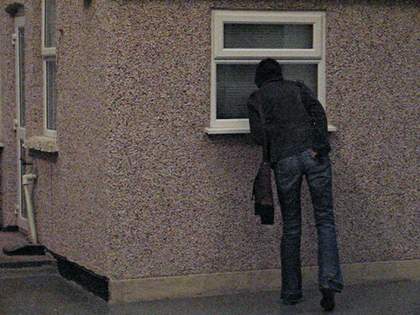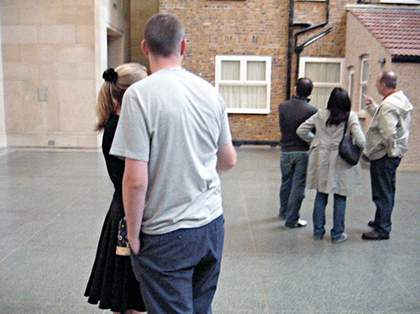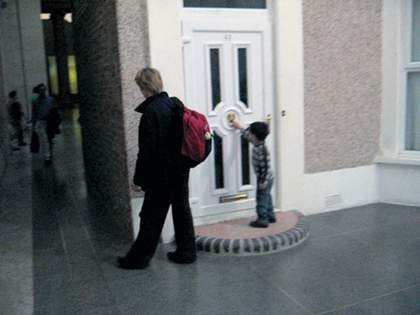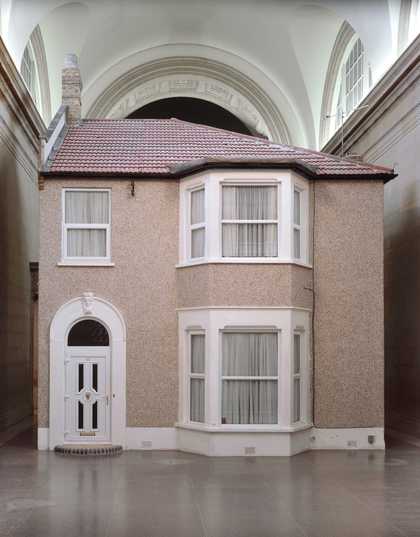Art is long, life is short; art criticism is quite short, but, at the same time, usually too long. The critic, unfortunately, must use words, although he or she knows ‘that for which we find words is already something dead in our hearts’. Explicating the visual through the verbal is an impossible job, however well informed and cogent the writer may be.
Therefore, I am proposing a different form of criticism that is unconsidered, spontaneous, organic and largely superficial; the main insights it offers are into the ephemeral experience of being in a gallery in the presence of an artwork. It is a mundane poem to the infinite variety of the human personality through small fragments of language spoken among people who are not critics and do not expect their words to be recorded. This is a form I have called criticism trouvé, which means that I have been hanging around Tate Britain surreptitiously jotting down comments made by visitors, in this case to Michael Landy’s Semi-detached.
At the end of my experiment I had pages of stuff with contributions from scores of critics trouvés. I have selected those remarks that pleased, entertained or enlightened me most and stitched them together into a verbal collage of anti-criticism. The review starts with comments recorded at the moment gallery-goers are confronted with the full-sized semi-detached house Landy has created to stand in the high space of the Duveen Galleries:
It’s like our house, it’s got an arch. I like the way the roof curves. He’s got it down to the last minute detail. Very daunting; what the hell is in there? It looks like it could be haunted. Shall we see if anyone’s in? Open the door. Realistic, detailed, fascinating. We’re not allowed to touch it children.
Waste of time. I don’t like it at all. It’s very ugly. Horrible, isn’t it? But it has a hint of irony. Not as good as his Break Down piece. Obviously working-class people who own the house. It’s too strange, let’s move on.
Call me if you want anything. A foot massage. So are you going to your parents’ tonight? John, look at that man. I’m starving.

Video still of spectators looking at Michael Landy’s installation Semi-detached at Tate Britain
Photo: Laurent Benner

Video still of spectators looking at Michael Landy’s installation Semi-detached at Tate Britain
Photo: Laurent Benner
We move on now to the centre of the exhibition which shows on two screens some of the tiny details in the life led by Landy’s father, confined to the house by a terrible accident he had in 1976. We also hear the sound of (the father?) whistling:
A strong visual element. What’s that tune? The images are quite primitive. That says Crayola doesn’t it? He’s a satirist, isn’t he? It’s what you do to do up a semi. That noise is weird. It’s getting on my tits a bit. The films are quite. sort of gothic, or horror-ish, I’m not sure. Great space. It’s not saying how you make a house, but what’s in it. You have to look after it, very insightful. Interesting approach.

Video still of spectators looking at Michael Landy’s installation Semi-detached at Tate Britain
Photo: Laurent Benner
The final part of Semi-detached is the re-creation of the back of the house:
There’s another one over there. It invents a realistic world if that makes sense. This is what happens when you get, not just a house, but anything, and break it down to its bare essentials. Bricks! Too many kids around. Horrible, isn’t it? Looks sloppy. It’s shit, man. This is suburbia, I don’t know anything about it. I wish my husband would garden. I wish that I was at home. Who is that man writing things down? He’s been here a long time.
All right, I made those last two quotes up, but if not said, they were certainly thought. The danger for the seeker after found critiques is that he or she must stay in an exhibition for an unnaturally long period of time, and this is liable to arouse suspicion. Thus the observer becomes the observed and a part of what is found.
I do not expect criticism trouvé to replace the conventional kind, but I recommend you try it for yourself, because it makes you realise that however bizarre or engrossing an artwork is, it can barely hope to compete with the peculiar creature for whom it is created.

